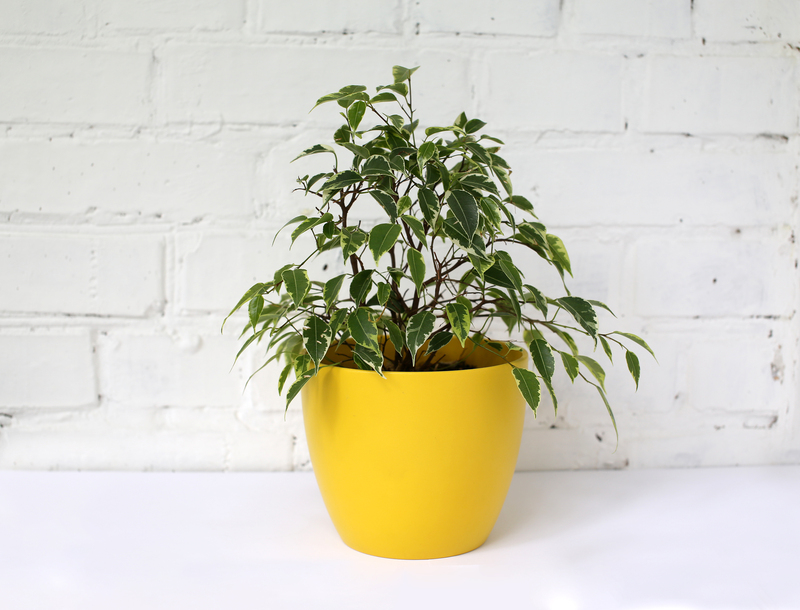Garden Plants: A Guide to Winter Hardiness
Posted on 28/05/2025
Garden Plants: A Guide to Winter Hardiness
Planning a beautiful garden is not just about selecting attractive plants--it's also about making sure those plants will withstand the cold months. Understanding the winter hardiness of your garden plants is essential to the year-round success and splendor of your yard. This comprehensive guide to winter hardiness will help you choose, plant, and care for a wide variety of garden species suitable for your region's climate.

Understanding Winter Hardiness in Garden Plants
Winter hardiness, often referred to as cold hardiness, is a plant's ability to survive and thrive through the winter, even in freezing temperatures. Not every plant is equipped to handle the harsh cold--knowing what can and cannot survive in your garden is the difference between lush, healthy beds and a withered wasteland come spring.
What Determines Plant Cold Tolerance?
- Genetics: Some plant species are genetically predisposed to survive sub-zero temperatures, while others are naturally tropical.
- Acclimatization: Gradual exposure to cold in the autumn helps many plants build resistance to freezing.
- Plant Maturity: Mature, well-established plants are often more winter hardy than freshly planted or youthful specimens.
- Growing Conditions: Healthy plants grown in ideal soil and with proper watering endure more winter stress.
- Weather Extremes: Sudden temperature drops, ice storms, or fluctuating freeze-thaw cycles can exceed any plant's natural hardiness.
Assessing Your Garden's Winter Hardiness Zone
What Are USDA Hardiness Zones?
For gardeners in the United States, the USDA Plant Hardiness Zone Map is an essential tool for determining which plants will survive winter in your region. These zones are defined by the average minimum winter temperature, helping to match plant varieties to local conditions.
- Zone 1: -60?F to -50?F (the coldest regions)
- Zone 10+: +30?F and above (mild, frost-free areas)
If you live outside the US, similar maps exist for Canada, Europe, Australia, and beyond--just search for your local plant hardiness zone. Knowing your zone is the first step in selecting winter-resistant garden plants.
How to Find Your Hardiness Zone
- Visit the USDA Plant Hardiness Zone Map website or search for a local equivalent.
- Enter your address or click on the map to find your garden's zone.
- Always choose plant varieties that are rated for coldest expected temperatures in your zone.
Types of Garden Plants Based on Winter Hardiness
Not all plants react the same way to cold weather. Understanding the different categories of garden plants will help you plan a beautiful, resilient landscape.
Tender Plants
Tender garden plants are not adapted to endure frost or freezing temperatures. Examples include tomatoes, basil, impatiens, and many tropical flowers. These must be treated as annuals outside warm climates, replanted each year, or brought indoors for winter protection.
Semi-Hardy (Half-Hardy) Plants
Semi-hardy plants can take a light frost or short periods of cold but may die in prolonged, deep freezes. Examples include snapdragons, calendula, and some salvias. Gardeners may need to give extra protection--such as mulch or covers--to help these plants survive milder winters.
Hardy Perennials
Hardy perennials survive year after year. These plants are adapted to freeze down to the ground but regrow in spring. Irises, daylilies, hostas, and peonies are excellent examples. Choosing winter hardy perennials is ideal for low-maintenance, long-lived gardens.
Evergreen and Woody Plants
Evergreen shrubs and trees, such as boxwood, yew, fir, and juniper, maintain their structure throughout the winter. Many evergreen species are bred specifically for cold tolerance and offer critical structure to winter gardens.
Top Winter Hardy Garden Plants By Region
Here are some of the best winter hardiness champions for gardens in various climates, categorized by typical hardiness zones.
Zones 3-5: Surviving Severe Cold
- Pansy (Viola x wittrockiana): Blooms in cool weather and can survive down to zone 4 when heavily mulched.
- Bee Balm (Monarda): Provides year-round interest, pollinator friendly and resilient to zone 3.
- Daylily (Hemerocallis): Unfussy perennials that withstand bitter winters.
- Siberian Iris (Iris sibirica): Gorgeous foliage and blooms, hardy to zone 3.
- Spruce and Pine Trees: Iconic evergreens beloved for their resilience and winter beauty.
Zones 6-7: Moderate Winters
- Boxwood (Buxus sempervirens): Classic evergreen hedges and shapes, perfect for structure.
- Peony (Paeonia): Lush blooms in spring and reliably returns in zone 6 gardens.
- Hosta: Tolerates shade and cold, coming back bigger each season.
- Japanese Maple (Acer palmatum): Elegant, colorful foliage, hardy in sheltered spots.
Zones 8-10: Mild Winters
- Camellia: Exquisite blooms throughout winter in zone 8 and above.
- Gardenia: Gorgeous, fragrant flowers flourish in milder climates.
- Lavender: Hardy in zone 8, these fragrant herbs add beauty and scent.
- Citrus Trees: Lemons, limes, and oranges thrive year-round in frost-free gardens.
How to Protect Your Garden During Winter
Practical Methods for Increasing Winter Survival
Even tough plants sometimes need extra help during a particularly cold spell. Here are ways to improve the winter hardiness of your garden:
- Water before a freeze: Well-hydrated plants are less prone to cold damage.
- Mulch deeply: Use straw, leaves, or bark mulch to insulate roots from temperature swings.
- Cover vulnerable plants: Use burlap, frost cloth, or even an upturned bucket or container for temporary frost protection.
- Prune strategically: Remove dead or diseased wood before winter, but avoid heavy pruning that stimulates new, tender growth.
- Plant in sheltered spots: Near walls, fences, or under tree canopies where temperatures are a bit milder.
Common Winter Gardening Mistakes and How to Avoid Them
- Planting out of season - Never introduce tender plants in late fall or winter.
- Over-fertilizing - Excess nutrients late in the season promote lush new growth that's easily killed by frost.
- Ignoring microclimates - Take advantage of warmer corners of your yard, like south-facing walls.
- Neglecting to mulch - Exposed soil loses heat quickly and can result in root death.
Propagation and Planning for Next Year
Winter is the perfect time to plan improvements. Use chilly months to research, order seeds and bulbs, and prepare for spring planting. Consider propagating your hardiest plants by dividing bulbs, layering, or starting seeds indoors. Select new varieties with proven cold resilience and gradually introduce them to your landscape for the best results.
Benefits of Planting Winter Hardy Species
- Lower maintenance: Less worry about plant loss and replanting every year.
- Cost effective: Savings on annual replacements.
- Diversified garden interest: Beauty in all seasons, including the winter months.
- Support for wildlife: Many hardy plants provide winter food and shelter for birds and pollinators.

Frequently Asked Questions About Winter Hardiness in Garden Plants
How Can I Tell if a Plant is Truly Winter Hardy?
Check plant tags and descriptions--they usually indicate the lowest USDA zone a plant can survive. Reliable nurseries and extension offices offer comprehensive winter hardiness guides for garden plants.
Can I Make a Non-Hardy Plant Survive the Winter?
Tender and tropical plants can sometimes be overwintered (kept alive through winter) by:
- Bringing them indoors or into a greenhouse
- Taking cuttings and rooting them inside
- Storing dormant bulbs in a dry, cool spot until spring
What's the Difference Between Winter Hardy and Frost Hardy?
Winter hardy means that a plant can survive ongoing cold conditions below freezing. Frost hardy usually indicates a plant can withstand brief touches of frost but not extended freezes. Always verify the term and hardiness rating before planting.
Conclusion: The Key to a Resilient, Gorgeous Winter Garden
Selecting winter hardy garden plants is both an art and a science. By matching plant species to your local hardiness zone, taking steps to protect vulnerable species, and planning for seasonal changes, you can enjoy beautiful, robust gardens year-round. Remember: observe your microclimates, enrich your soil, mulch generously, and introduce the right combination of perennials, evergreens, and annuals. With proper planning and careful plant selection, your garden can flourish through even the coldest of winters, becoming a haven for both you and local wildlife.
Review regional and online resources regularly, experiment with new varieties, and keep a gardening journal to track the hardiness of your favorite plants. Every season, your knowledge will grow--right along with your garden's enduring beauty.
- Discover your hardiness zone before planting
- Choose plants proven for cold resilience
- Protect vulnerable specimens with smart gardening techniques
Start building your winter hardy garden today--and enjoy year-round vitality in every season!

